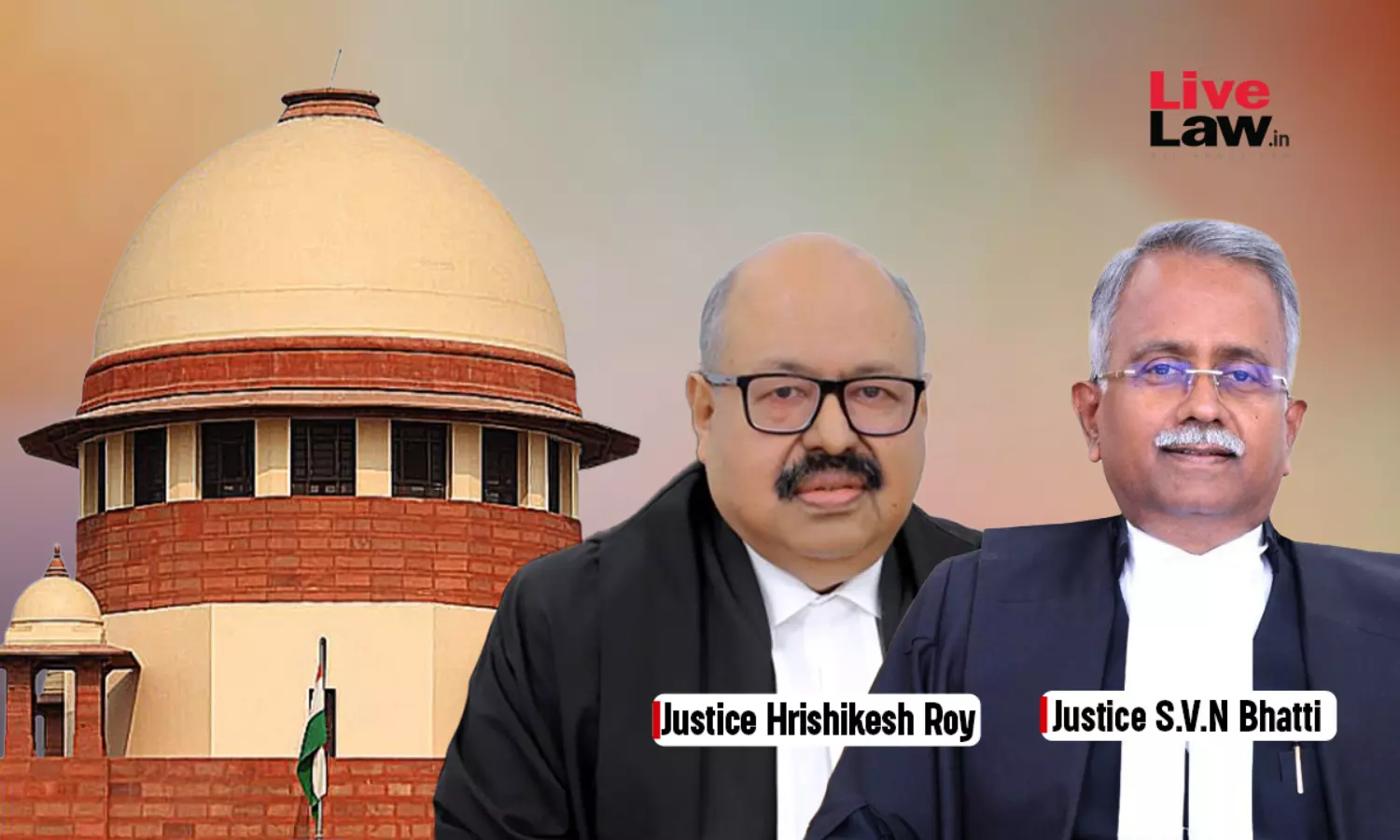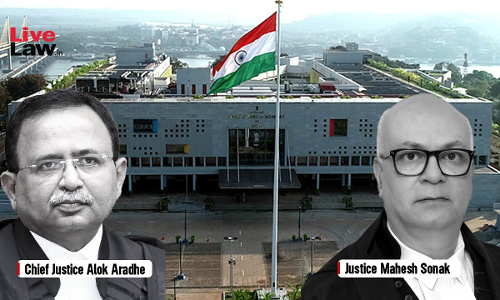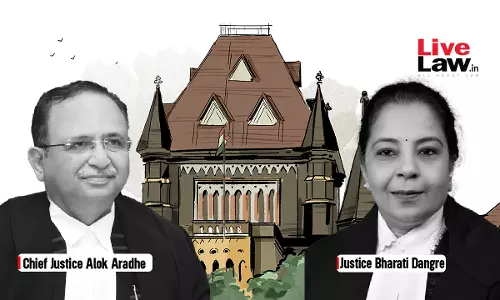Supreme Court Explains Procedure For Admitting Insufficiently Stamped Instruments Under Karnataka Stamp Act, 1957

The Supreme Court recently explained the procedure related to admission of insufficiently stamped instruments as evidence as per Karnataka Stamp Act, 1957.A bench of Justice Hrishikesh Roy and Justice SVN Bhatti extracted the steps to be followed as per Sections 33, 34, 35, 37, and 39 of the Act in the following manner:[Note: In Karnataka, District Registrar acts as the Deputy Commissioner...
The Supreme Court recently explained the procedure related to admission of insufficiently stamped instruments as evidence as per Karnataka Stamp Act, 1957.
A bench of Justice Hrishikesh Roy and Justice SVN Bhatti extracted the steps to be followed as per Sections 33, 34, 35, 37, and 39 of the Act in the following manner:
[Note: In Karnataka, District Registrar acts as the Deputy Commissioner of Stamps.]
- Section 33 provides the impounding of instruments that are insufficiently or improperly stamped, preventing parties from withdrawing such documents once they are notified about the requirement to pay proper stamp duty and penalties.
- A party relying on an insufficiently stamped instrument can either:
Pay the required duty and penalty directly under Section 34.
Apply under Section 39 to the District Registrar/Deputy Commissioner to determine and collect the deficient stamp duty and penalty. After payment, the impounded instrument is released and can be used as evidence.
- If a party chooses to send the instrument to the Deputy Commissioner to collect the deficit stamp duty and penalty, the court has no option but to send the document to the Deputy Commissioner. However, this choice must be made by the party before the court invokes Section 34.
- Section 34 bars the use of insufficiently stamped instruments in evidence until the deficient stamp duty and penalty are paid. The authority collecting the deficit has no discretion but to levy a penalty of ten times the deficit.
- Section 35 provides that once an insufficiently stamped instrument is admitted into evidence under Section 34, its admission cannot be challenged.
- Section 37 - Dealing with Impounded Instruments:
After the deficit duty and penalty are paid, the court has to forward it to the Deputy Commissioner or District Registrar.
If a case does not fall under Sections 34 or 36 (admission of improperly stamped instruments), the impounding authority must send the original document to the Deputy Commissioner.
- Once a party complies by paying the required stamp duty and penalty under Sections 34 or 39, the legal objection related to insufficient stamping under Section 33 is removed, allowing the document to be admitted into evidence without further objections under the Stamp Act.
- Under Section 39, the Deputy Commissioner or District Registrar is responsible for stamping impounded instruments and has discretion in levying penalties, which can extend up to ten times the deficient duty but only in extreme cases.
- After fulfilling all requirements, including payment of duty and penalties, the document complies with the Act's requirements. The scheme allows a party to directly approach the District Registrar, pay the duty and penalty, and then present the document to the court, removing any objections under Sections 33 or 34.
The judgement sets out these steps in paragraph 21, which reads thus –
“21. As per the steps taken under Sections 33, 34, 35, 37, and 39 under Chapter IV of the Act, the position in law is well-established, and axiomatic by the letter of law and precedents of this Court. However, there are a few misgivings in the sequence of its application. For the benefit of practice and procedure, we sum up the steps as follows.
21.1. Section 33 of the Act is titled examination and impounding of instruments. The object of the provision is to disable persons from withdrawing the instruments produced by them on being told that proper stamp duty and penalty should be paid.
21.1.1. The person who intends to rely on an insufficiently/improperly stamped instrument has option to submit to the scope of Section 34 of the Act, pay duty and penalty. The party also has the option to directly move an application under Section 39 of the Act before the District Registrar and have the deficit stamp duty and the penalty as may be imposed collected. In either of the cases, after the deficit stamp duty and the penalty are paid, the impounding effected under Section 35 of the Act is released and the instrument available to the party for relying as evidence. In the event, a party prefers to have the document sent to the deputy commissioner for collecting the deficit stamp duty and penalty, the Court/Every Person has no option except to send the document to the District Registrar. The caveat to the above is that, before the Court/Every Person exercises the jurisdiction under Section 34 of the Act, the option must be exercised by a party.
21.2. Section 34 of the Act is titled instruments not duly stamped inadmissible in evidence. This provision bars the admission of an instrument in evidence unless adequate stamp duty and the penalty are paid. Every person so authorised to collect deficit stamp duty and penalty has no discretion except to levy and collect ten times the penalty of deficit stamp duty.
21.3. Section 35 of the Act is titled admission of instrument where not to be questioned. Section 35 prohibits questioning the admission of an insufficiently stamped instrument in evidence.
21.4. Section 37 of the Act is titled instruments impounded, how dealt with. This Section arises when the party pays the deficit duty and penalty, the Court is to impound the instrument under Section 33 of the Act and has to forward the instrument to the Deputy Commissioner/District Registrar. Sub section (2) of Section 37 of the Act deals with cases not falling under Section 34 and 36, and the person impounding an instrument shall send it in original to the Deputy Commissioner. This includes the exigencies set out in paragraph 21.1.1.
21.5. Being a regulatory and remedial statute, a party who follows the regulation, and pays the stamp duty and penalty, as per Sections 34 or 39 of the Act, the legal objection emanating from Section 33 of the Act alone is effaced and the document is admitted in evidence. In other words, the objection under the Stamp Act is no more available to a contesting party.
21.6. Section 39 of the Act is titled deputy commissioner's power to stamp instruments impounded. This Section provides the procedure to be followed by the Deputy Commissioner/District Registrar while stamping instruments that are impounded under Section 33 of the Act. As per Section 39(1)(b) of the Act, the penalty may extend to ten times the stamp duty payable; however, ten times is the farthest limit which is meant only for very extreme situations. Therefore, the Deputy Commissioner/District Registrar has discretion to levy and collect commensurate penalty.
21.7. The above steps followed and completed by paying/depositing the deficit duty and penalty would result in the instrument becoming compliant with the checklist of the Act. The finality is subject to the just exceptions envisaged by the Act addressing different contingencies.
21.8. The scheme does not prohibit a party to a document to first invoke directly the jurisdiction of the District Registrar and present the instrument before Court/Every Person after complying with the requirement of duty and penalty. In such an event, the available objection under Sections 33 or 34 of the Act is erased beforehand. The quantum of penalty is primarily between the authority/court and the opposing party has little role to discharge.”
The Court said this while deciding appeals against trial court's order imposing 10 times penalty of deficit duty on the appellant. The question before the Court was whether the penalty determined by the trial court instead of sending the instrument to the District Registrar for determination and collection of penalty is legal.
The appellant, in this case, filed a suit seeking a perpetual injunction to restrain the respondent from interfering with the appellant's peaceful possession of land. The appellant's claim was based on an agreement of sale executed with the respondent, which allegedly included a clause transferring possession of the property to the appellant as part performance of the sale agreement.
The respondent denied the execution of the agreement and argued that the suit document, if it existed, was insufficiently stamped. Subsequently, the respondent filed an application under Section 33 of the Act before the trial court to impound the agreement and collect the deficit stamp duty and penalty.
The trial court sent the sale agreement to the District Registrar to determine the stamp duty and penalty. The District Registrar returned the document, citing the absence of the village name, which prevented the assessment of the deficit duty.
The appellant filed a memo to clarify the village name. The trial court rejected the memo. The appellant then filed a writ petition and the Karnataka High Court directed that the memo be sent to the District Registrar for action on the stamp duty calculation.
The District Registrar found a deficit stamp duty of Rs. 71,200. The trial court ordered the appellant to pay this along with a penalty of ten times the duty, totalling Rs. 7,83,200. The appellant's writ petition and review petitions challenging this were dismissed, leading the appellant to file the current appeals.
The appellant's counsel argued that trial court erred in determining the stamp duty and penalty under Section 34. Instead, the counsel argued, the trial court should have sent the document to the District Registrar under Section 37(2) of the Act, allowing the Registrar to exercise discretionary jurisdiction under Section 39 to determine the appropriate penalty.
Advocate Liz Mathew, appointed as Amicus Curiae, argued that the discretionary power under Section 39 is exclusive to the District Registrar/Deputy Commissioner and cannot be expected to be exercised by a court under Section 34.
The Court noted that the respondent sought to have the trial court impound the instrument and send it to District Registrar, and till then the trial court had not yet considered the admissibility of the instrument for any purpose. Thus, the Court said that the trial court had not yet exercised its jurisdiction under Section 34 to admit the instrument after taking the stamp duty.
"Therefore, it was the respondent who required the suit agreement to be impounded and then sent to the District Registrar to be dealt with under Section 39 of the Act. In this case, the respondent desired the impounding of the suit agreement and collect the deficit stamp duty and penalty. The trial court is yet to exercise its jurisdiction under Section 34 of the Act. On the contrary, the trial court has called for a report from the District Registrar, so for all purposes, the suit instrument is still at one or the other steps summed up in paragraph 21. Therefore, going by the request of the respondent, the option is left for the decision of the District Registrar", the Court observed.
The Supreme Court held that the trial court's imposition of a penalty under Section 34 was illegal.
“The imposition of penalty of ten times at this juncture in the facts and circumstances of this case is illegal and contrary to the steps summed up in paragraph 21. The instrument is sent to the District Registrar, thereafter the District Registrar in exercise of his jurisdiction under Section 39 of the Act, decides the quantum of stamp duty and penalty payable on the instrument. The appellant is denied this option by the impugned orders. It is trite law that the appellant must pay what is due, but as is decided by the District Registrar and not the Court under Section 34 of the Act”, the Court held.
The Court set aside the impugned orders directing the payment of a ten-times penalty and directed the trial court to send the sale agreement to the District Registrar to determine the deficit stamp duty and penalty payable, after payment of which the agreement would be admissible.
Case no. – Civil Appeal Nos. 10039-40 of 2024
Case Title – Seetharama Shetty v. Monappa Shetty
Citation : 2024 LiveLaw (SC) 648
Click Here To Read/Download Judgment




